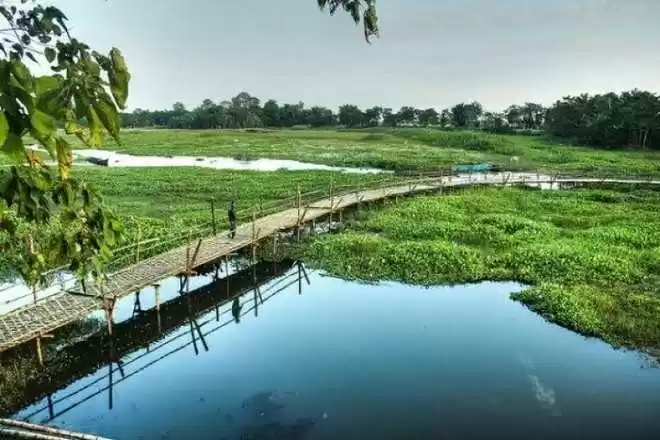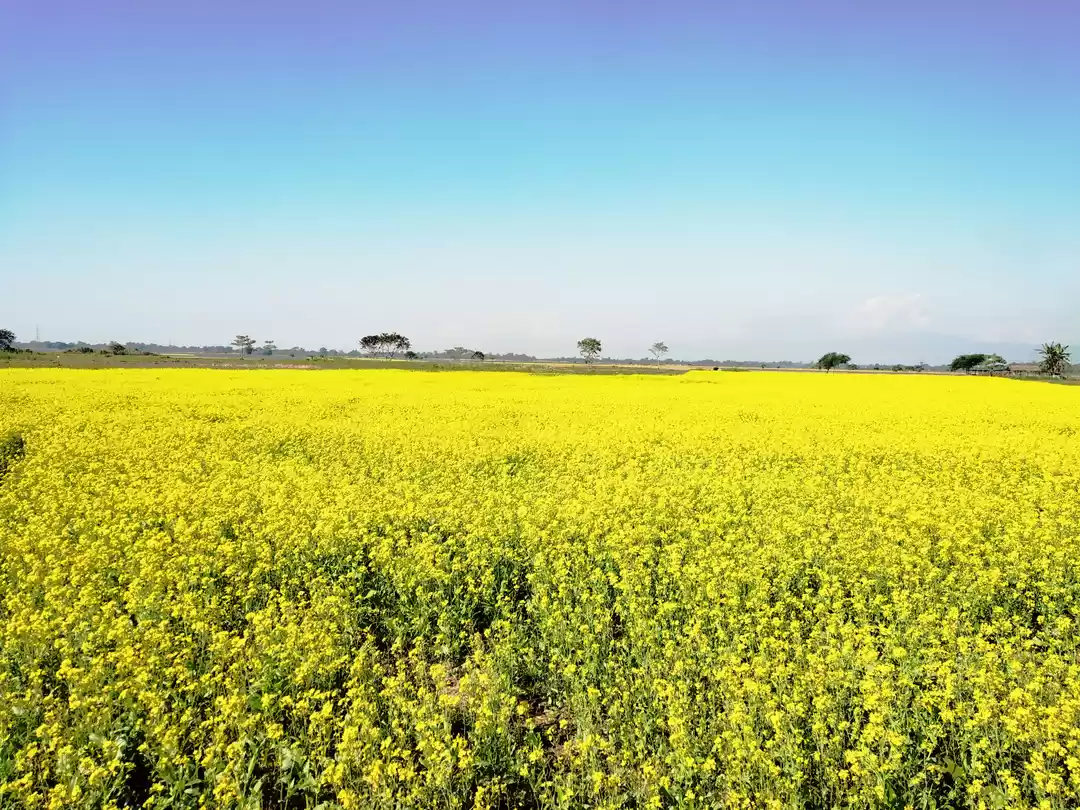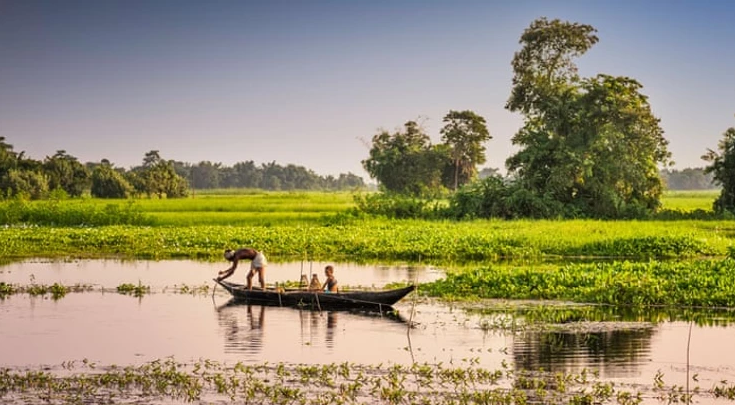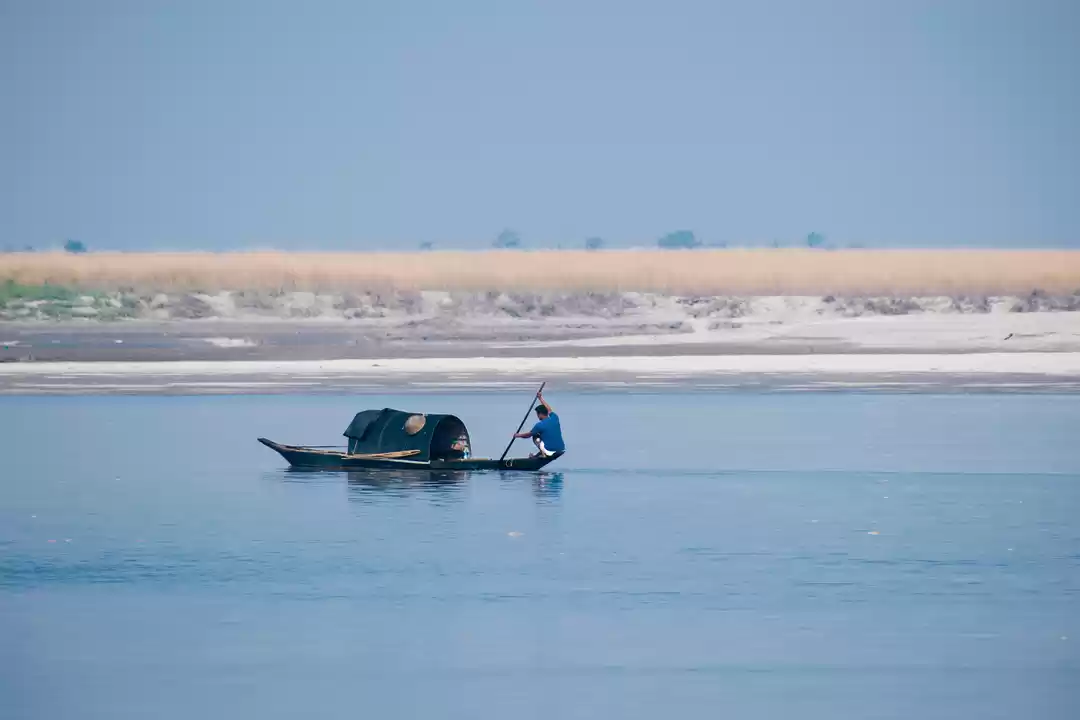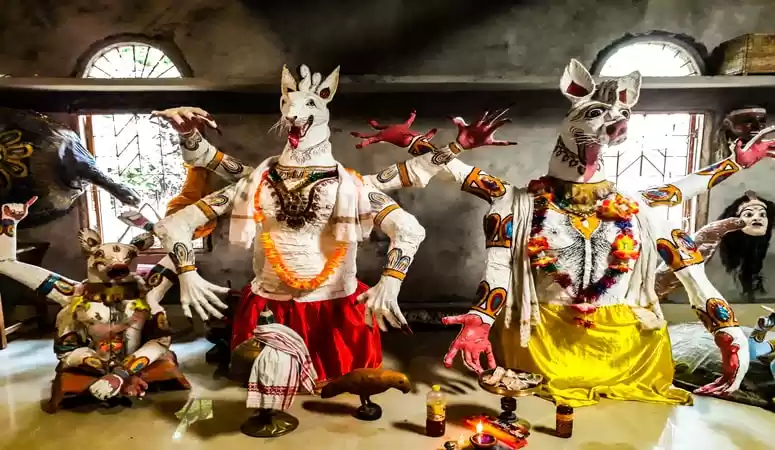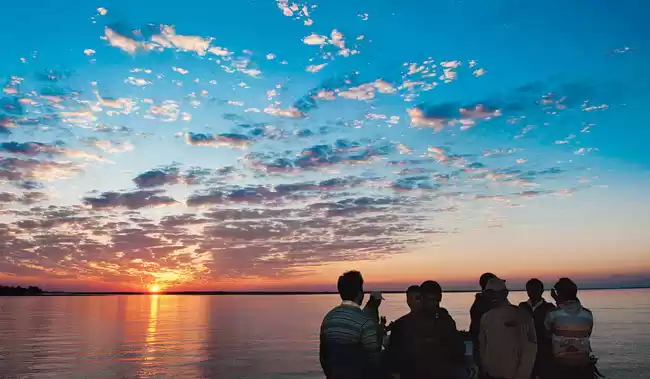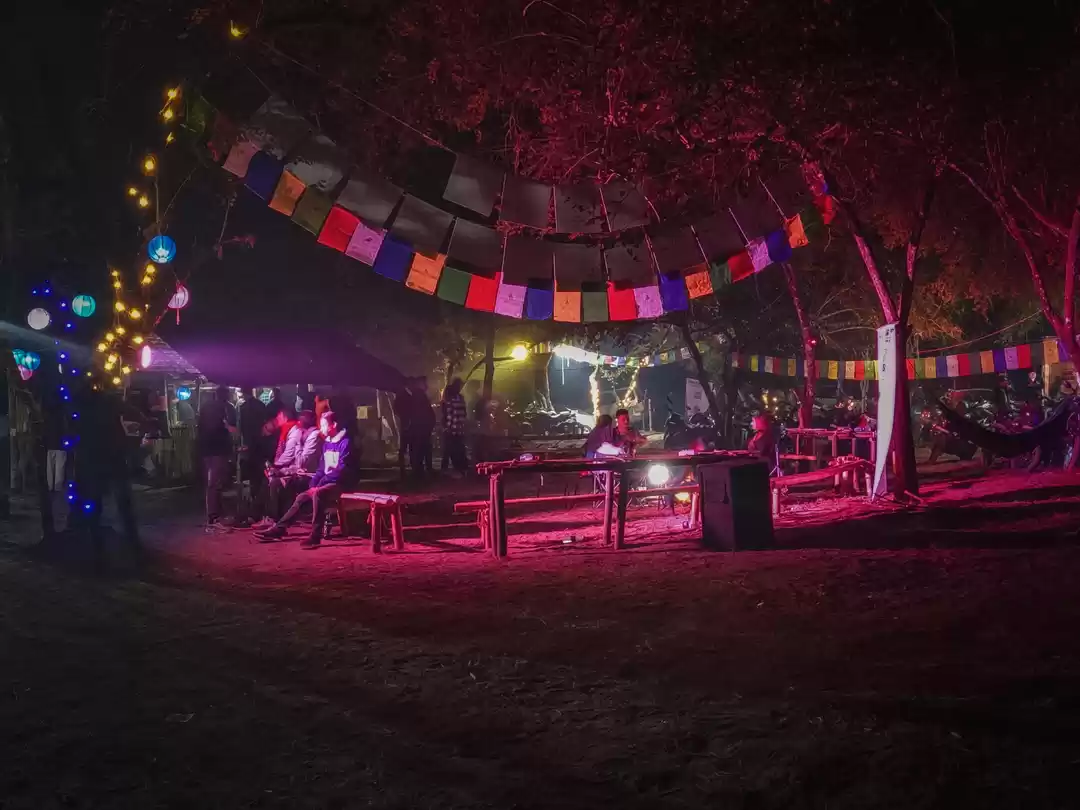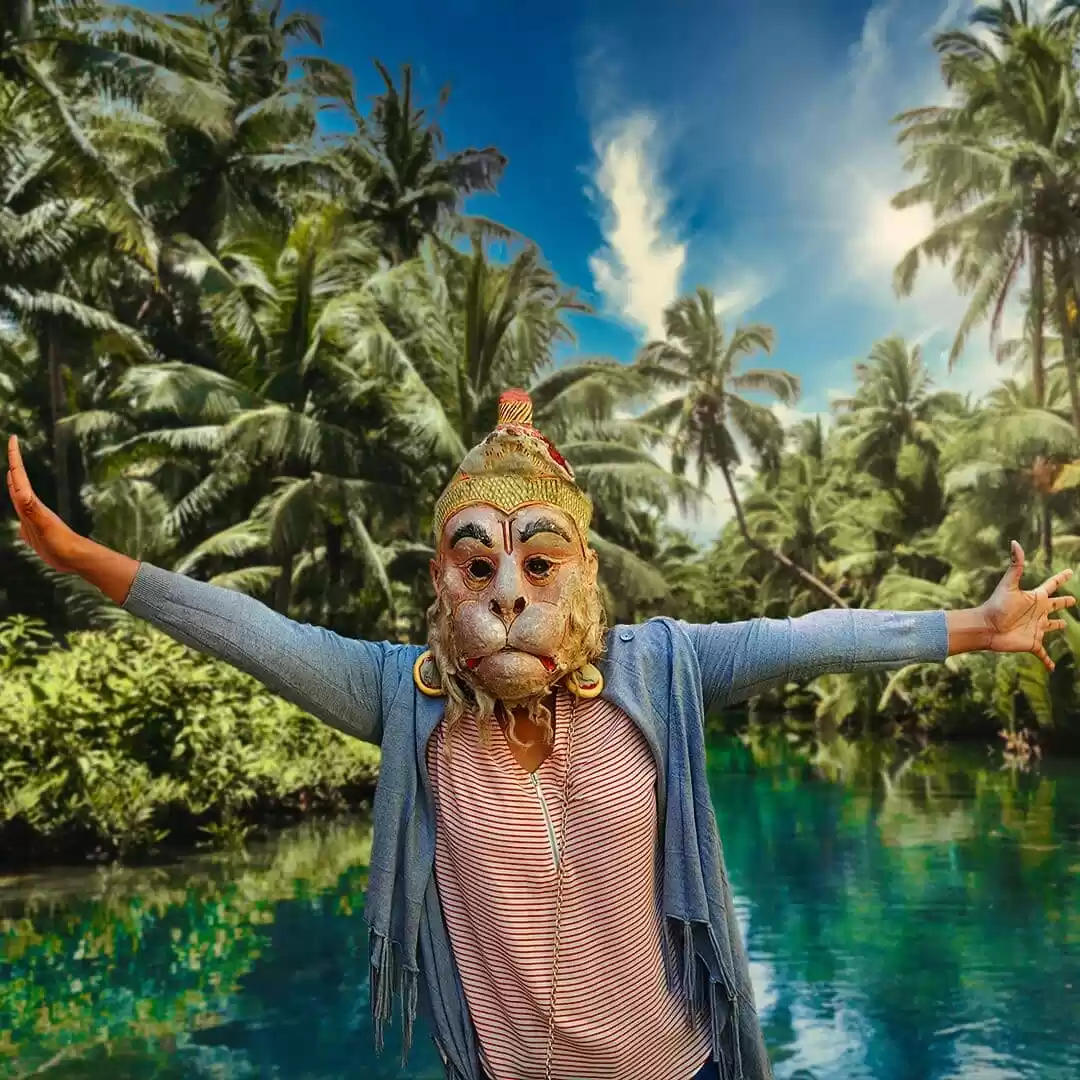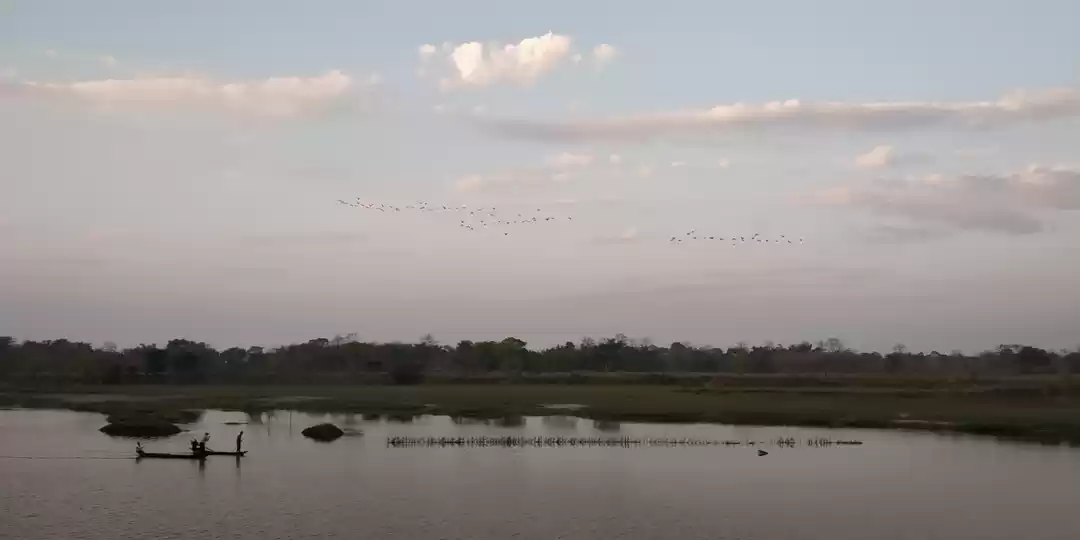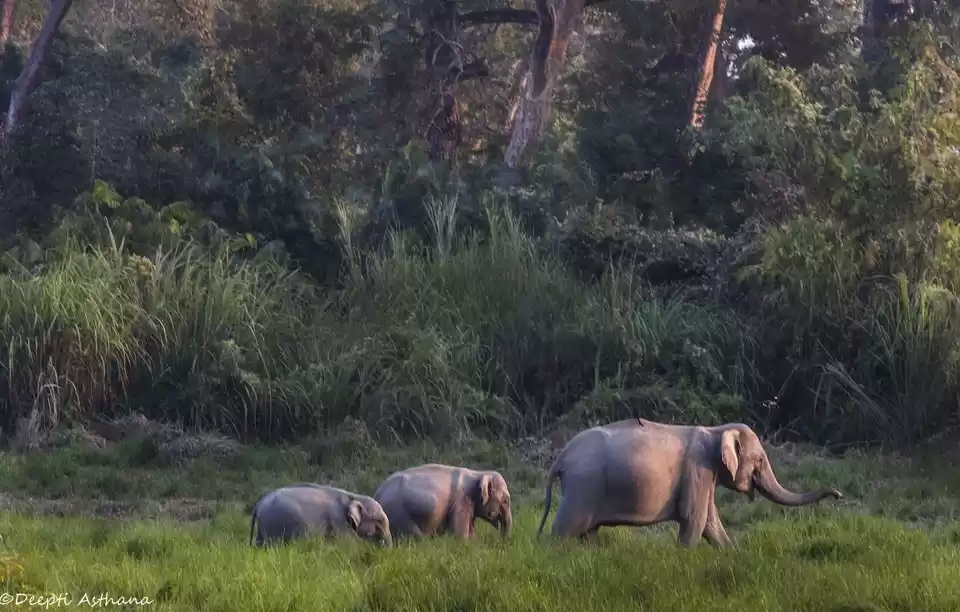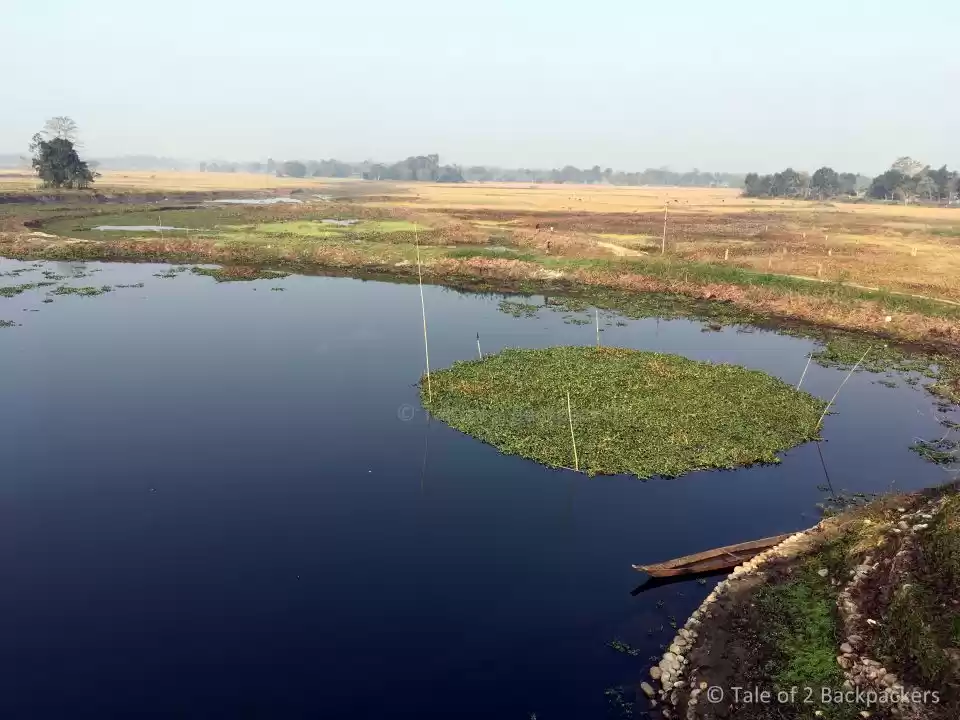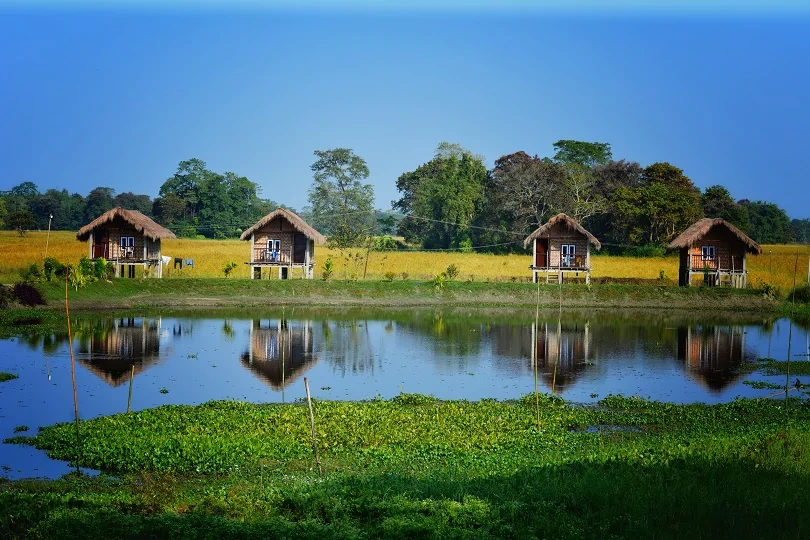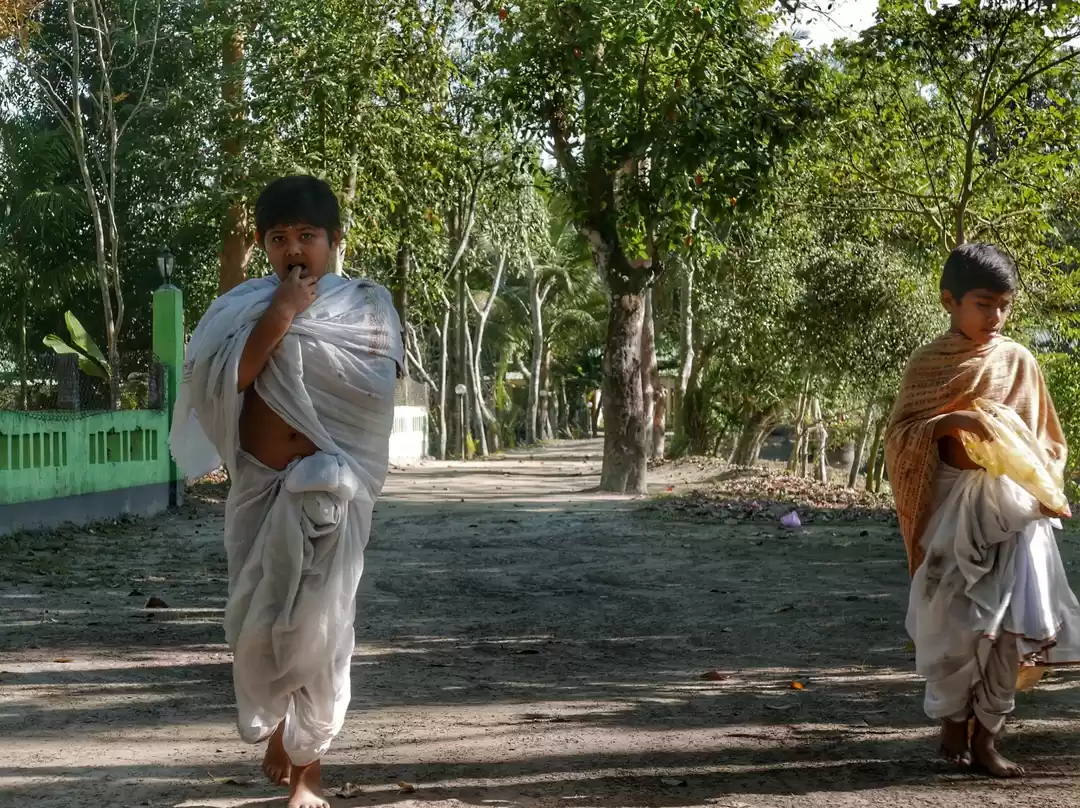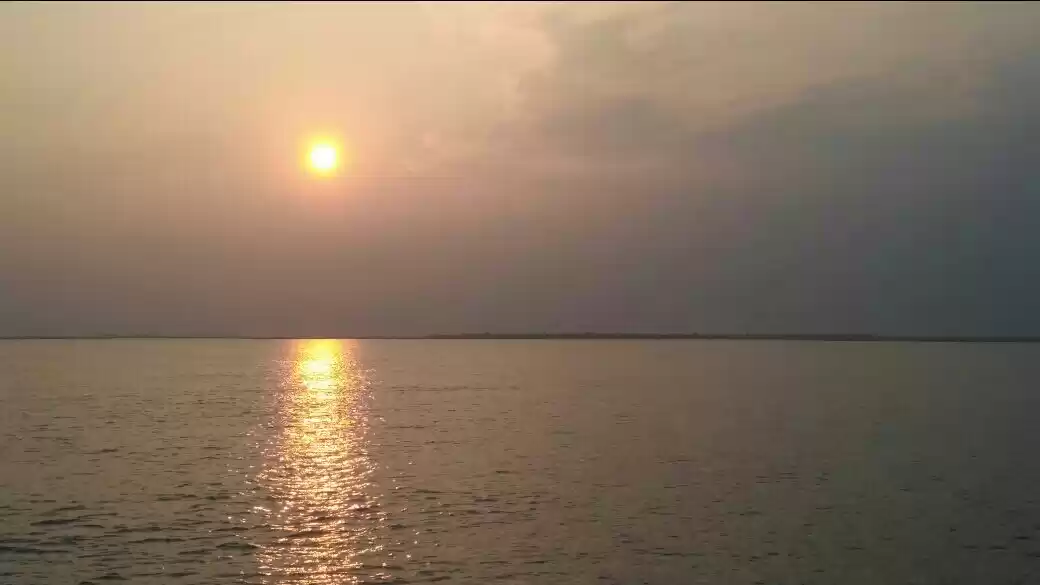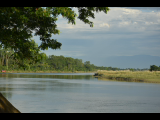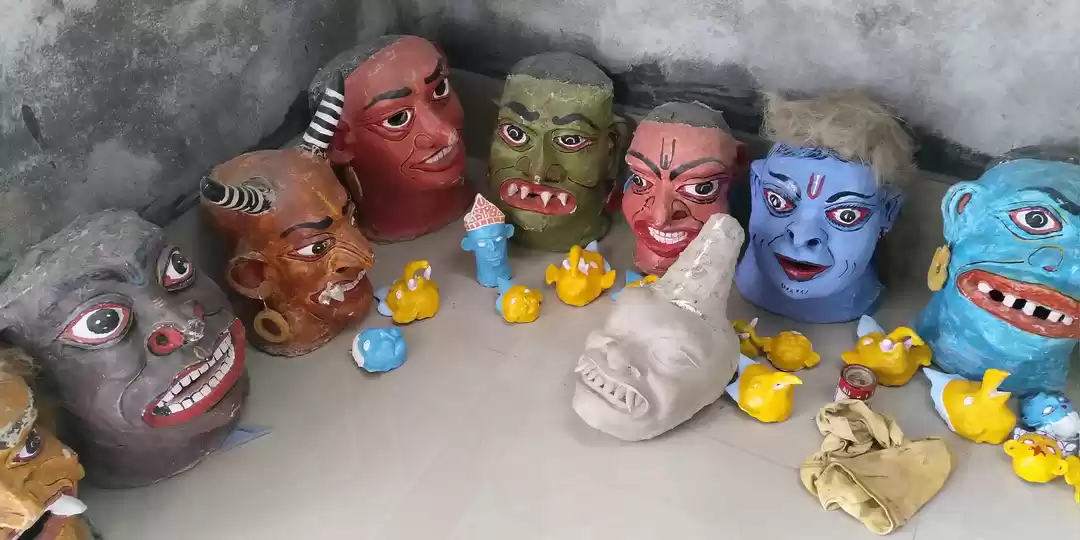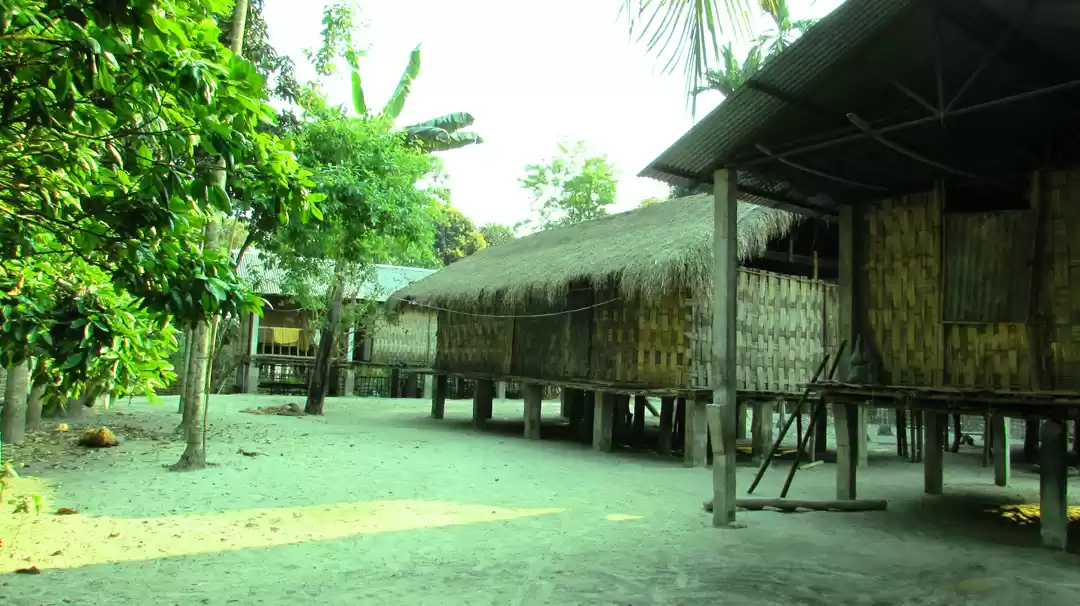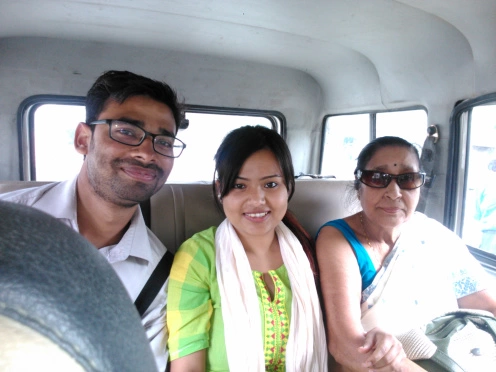From Majuli Island remain a quiet memory of the days spent quietly at the pace of bike tours, by roads surrounded by bamboos, that gently cut through the rice fields, whose green color fades under the gray sky, whose thick layer of clouds, brings a promise of rain.
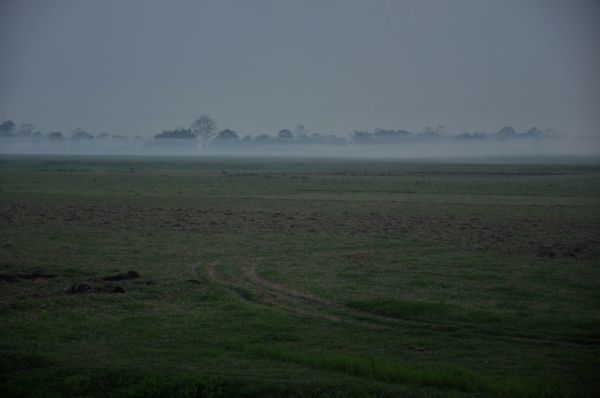
Feels the presence of a mysterious silence, only interrupted by the rhythmic chirping of unseen birds, hidden in the dense canopy of trees. Egrets and storks search the muddy bottom of ponds left by the monsoon, while small birds pick insects along the roadside, in a hurried pace.
The flat landscape out of sight, with the skyline blurring in the fog that comes up from the fields, constantly soaked in water. In this diffuse scenario joins the smoke that slowly comes from bonfires made to burn the waste from the previous harvest, preparing the fields for another rice crop, in an island where agriculture is the main activity of the population that don’t exceed 150 thousand people.
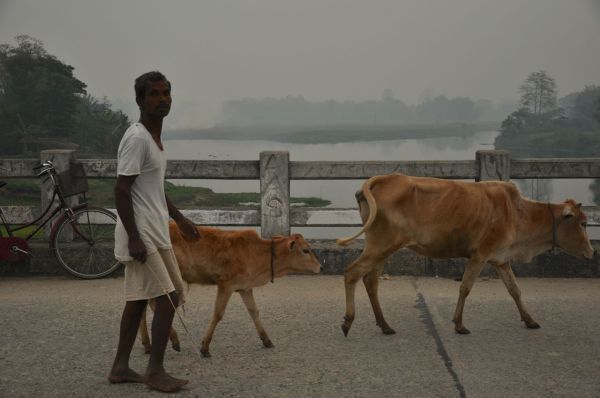
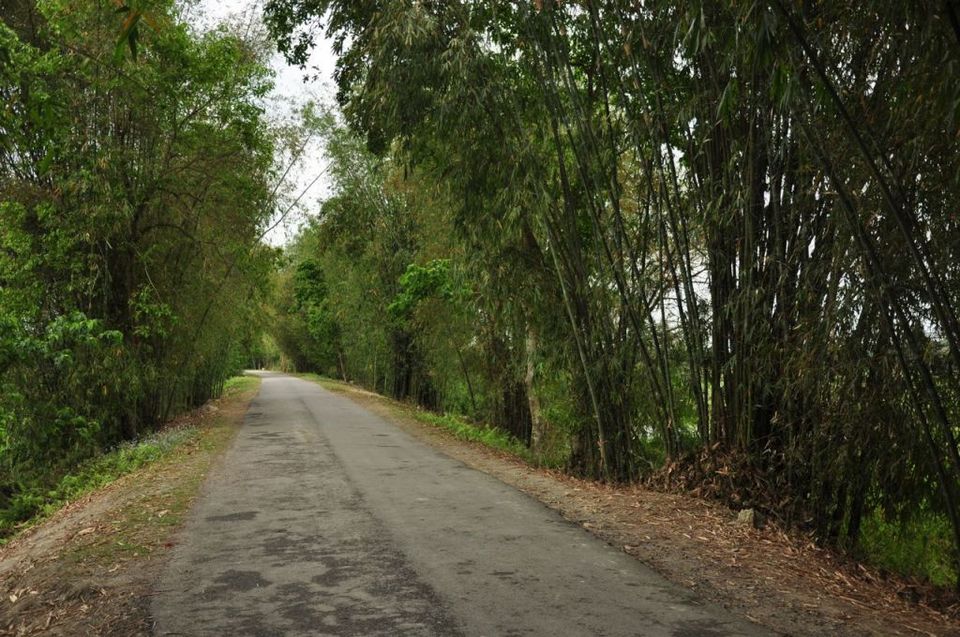
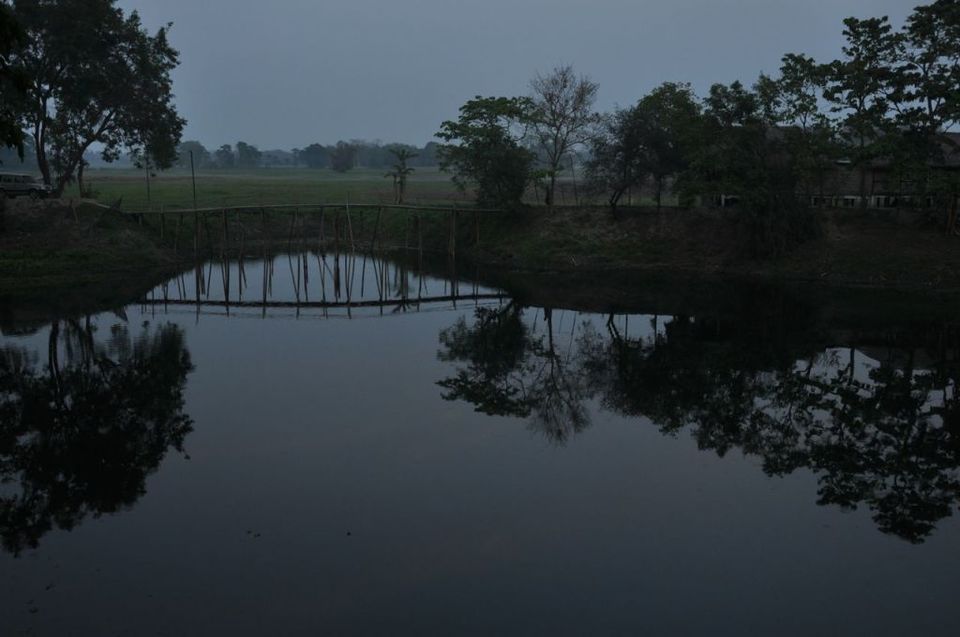
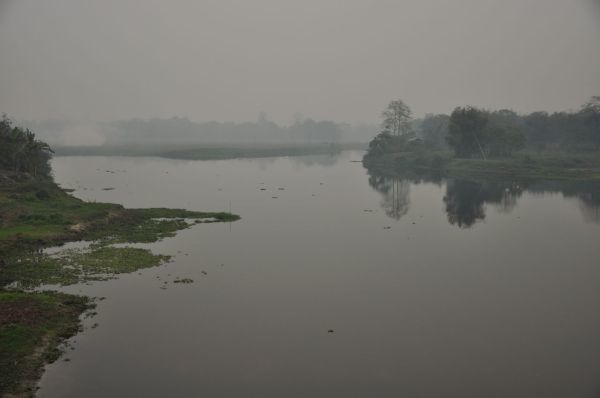
The Brahmaputra, the mythical and muddy river, which the apparently gentle waters become violent during the monsoon period, pouring the bed river and causing serious flooding. It’s this powerful force that is causing an accelerated erosion of the banks of Majuli island, which annually sees your area be reduced, with some villages been already swept away by the water. According to analytical predictions, the Brahmaputra can heal the entire island in 20 years… but nature has hidden plans, and what we see now as an island result from a huge flood in 1750.
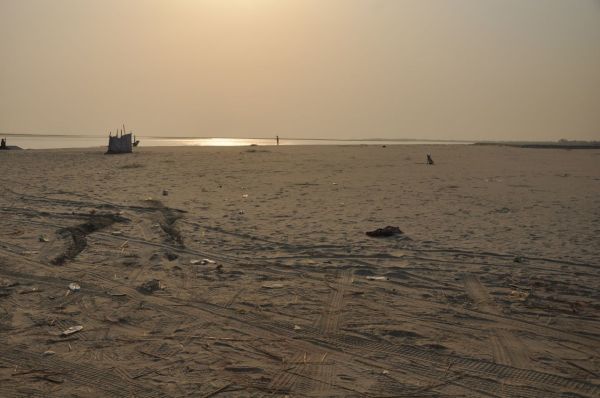
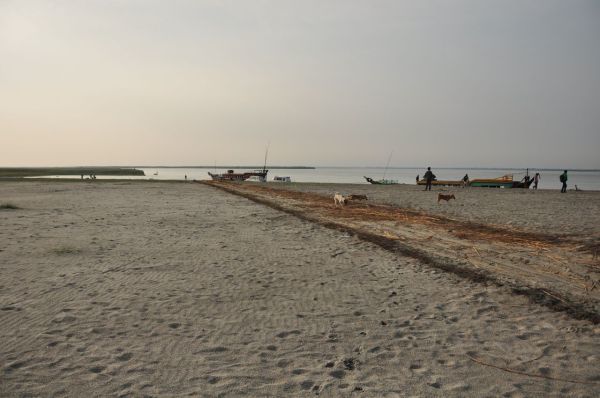
Despite being scattered all over the Assam state, Majuli shows the highest concentration of Satras, that attracts most of the visitors and helps to make this flat and green land, in a special place.
The Satras are like monasteries dedicated to Hinduism, created in the sixteenth century by the king of Assam, and despite changes and reforms have been working since then keeps as a center of arts and culture, in addition to the religious proposes. But religious practices in these monasteries differ from Hinduism practiced in the rest India, having diverged and gain own forms by the hand of Srimanta Sankardeva, who professed a monotheistic form of Hinduism called Vaishnavism. Depositaries of sacred scriptures of Vaishnavism, whose saint Sankardeva found refuge in Majuli, the Satras are still a place of pilgrimage among Assamese
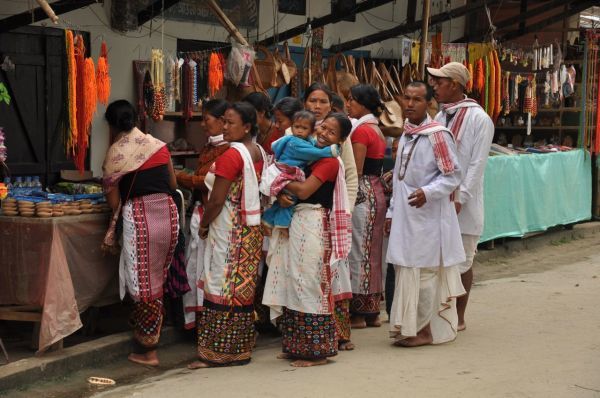
There are hundreds of these monasteries around the state of Assam, 65 of which concentrated in the 1250 km2 of the Majuli Island, but where only 26 are still in running.
Differing in importance, age and size, all Satras basically follow the same structure, occupying a large area, which access is symbolically identified by a gate, that is decorated with lions, elephants, fish, horses, where some of these animals are depicted with wings or details that transport us to an unknown mythology. In the center of the Satra is a large pavilion reserved for rehearsal and performance of music and dance shows. Inside there’s always a giant wooden statue of Garuda, a winged figure with a long nose, a mix of man and bird, which back to the entrance, protects the place. Attached to this communal area there’s the altar, whose best example is the Sri Sri Auniati Satra, richly decorated. Around, forming a rectangle, are arranged the dormitories and other facilities, lined up under the ground floor galleries.
From the visited satras, the Uttar Kamalabari, located very close to the village with the same name, is the most attractive ad well maintained, keeping its old structure and the traditional construction, which gives an atmosphere able to transport us in time.
Bengenaati and Garamur are two other Satras easily accessible by bicycle, and worth being visited with time, to enjoy the peace and tranquility of the place. But they are also a good excuse to explore the island and observe the daily life of the population, enjoying the changes of light, that is able to make the monotony of the flat landscape in a surprising and mysterious scenery.
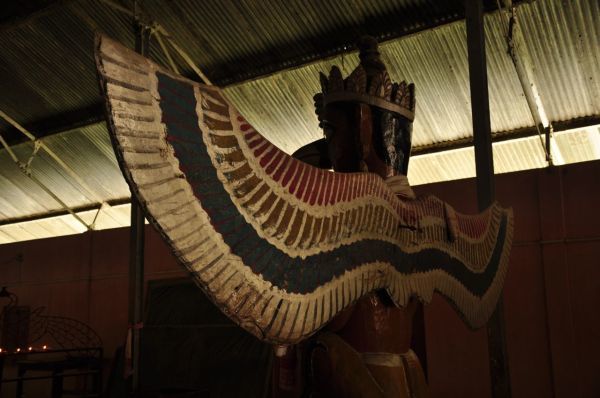
Night falls early in Majuli, as we are to the east of which is the central India, so just after four o’clock the sky begins to darken, with night arriving around 5 p.m. This makes it seem like the days are too short, especially for those that are not used to get up early. But here the population starts early daily routines, to work in the fields to rule the daily life in Majuli.
And it’s with the evening that something magical seems to happen in the satras that show almost deserted during the day. Under the dim yellow light, boys and young adults meet in the common area of Uttar Kamalabari, dancing and acting, to the sound of drums and soft melodies, where the mudras (symbolic or ritual gesture) are fundamental. Around, sitting on mats, Bhakats (celibate monks) observe closely the movements of these apprentices, correcting and encouraging. Sometimes these older monks have an active role in the rehearsals, playing mythic characters of hindu pantheon. The satras, besides the religious aspect, also work as art centers, where dance, theater, singing and music are fundamental pillars of the spread of Vaishnavism.
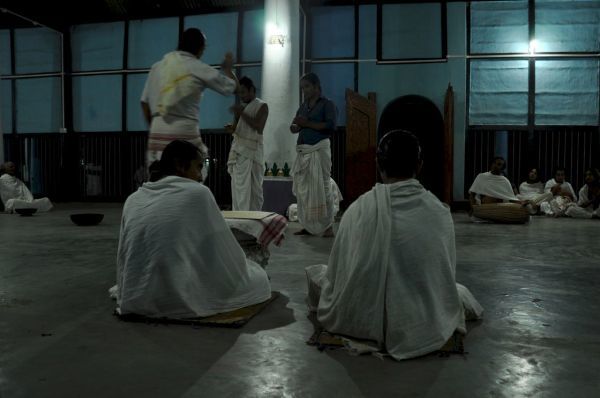
Satras:
Of the dozens of Satras existing in Majuli, these are easily accessible by bicycle. For the others, is necessary to hire a taxi as there are no motorbikes for hire.
Bengenaati: the oldest satra
Garamur: large and well-preserved satra
Sri Sri Auniati Satra: the most richly decorated
Uttar Kamalabari: the one that best preserves the original architectural features and which has more atmosphere.
There is a museum at Sri Sri Auniati Satra (50 rupees) but has no great interest, with some artifacts in poor condition, and with poor information. Some of the other Satras also have a museum, usually closed, and it is necessary to find out who has the keys and willingness to open the space to visitors.
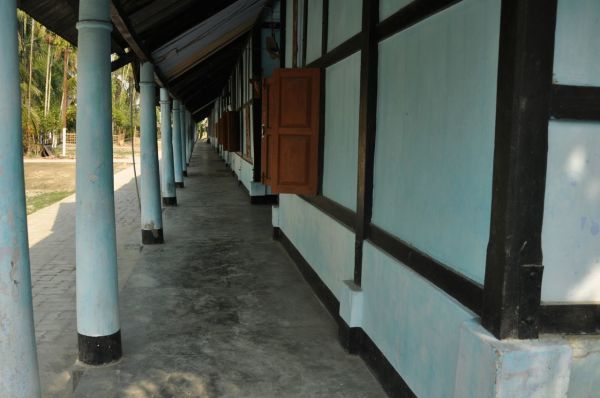
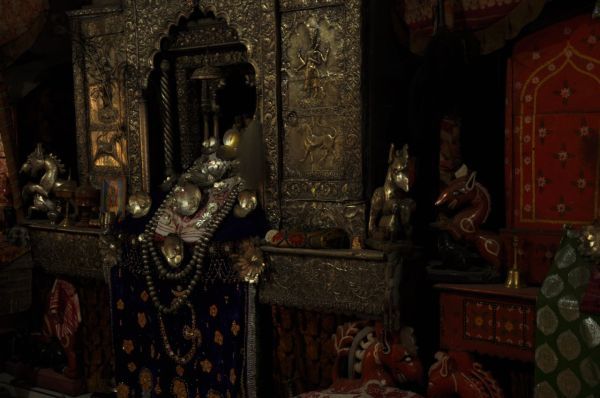
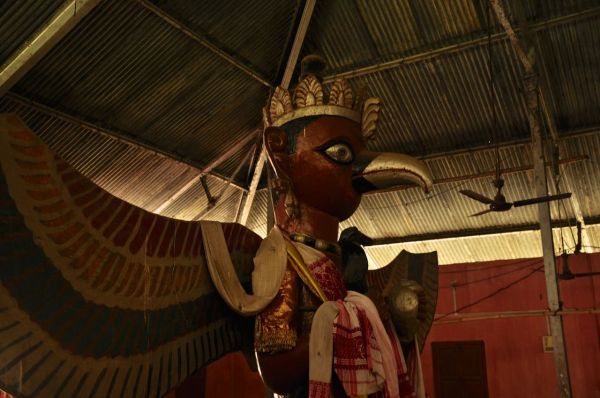
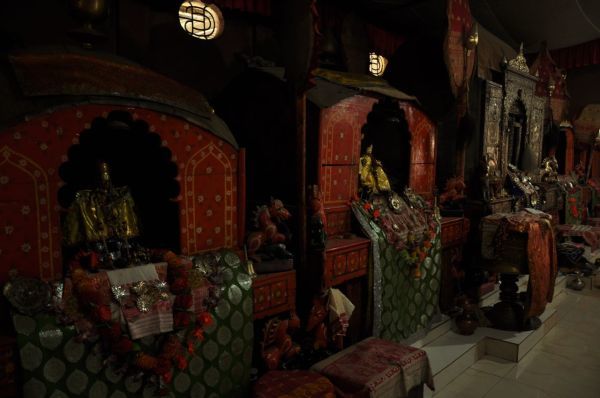
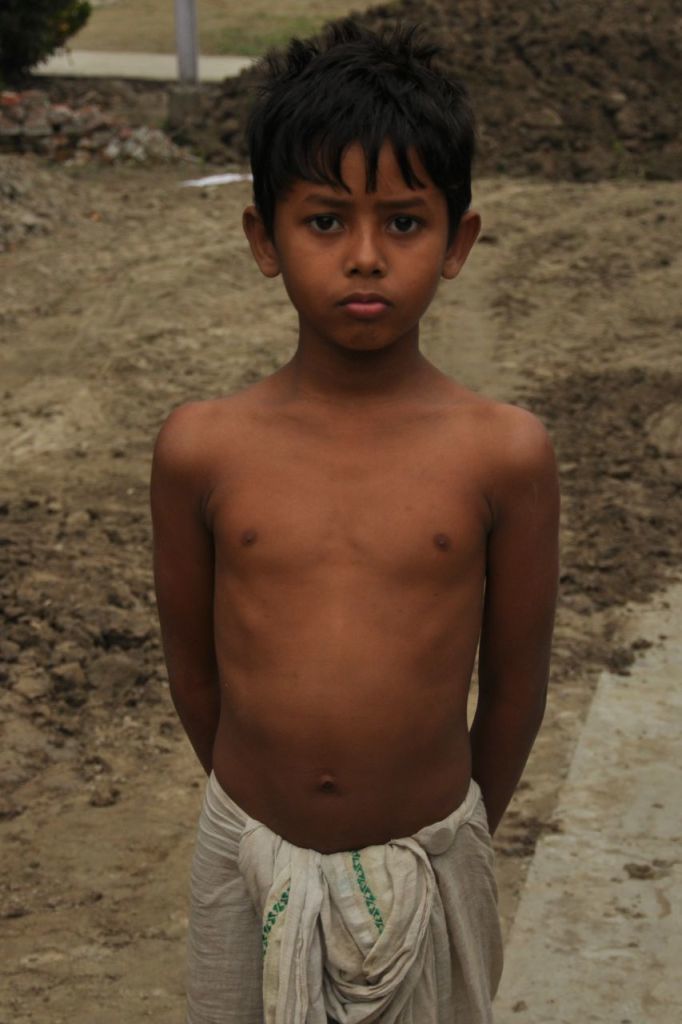
Weaving at Majuli island:
Although the biggest attraction of Majuli are the Satras, a longer visit allows seeing the modest but elaborate weaving, made by women.
In precarious huts, under the bamboo houses, in the yards, at the porches… women, from different generations, spend hours weaving elaborate textiles in simple wooden looms, which result in colorful and intricate patterns.
One would think that this is an important economic activity that keeps women occupied while the rice fields don’t need so much manpower. But these beautiful weaving fabrics are to be used be themselves, with the simple ones as casual outfit, and the most elaborate and showy for special occasions, such as visiting a satra, which is always done in a family.
The Assamese, particularly men often wear a cloth around the neck, in the form of a scarf, the gamosa where over a white background arise in a bright red color, figures or geometric patterns, that stand out in the plain background. These scarfs, that can easily be mistaken with towels, have several uses and serve not only as an adornment around the neck or around the waist, as well as a bath towel, or for decorating tables and altars. The red and white of these fabrics is a common ornament of satras statues, as well as an essential decoration of the garuda, with a long nose and broad wings.
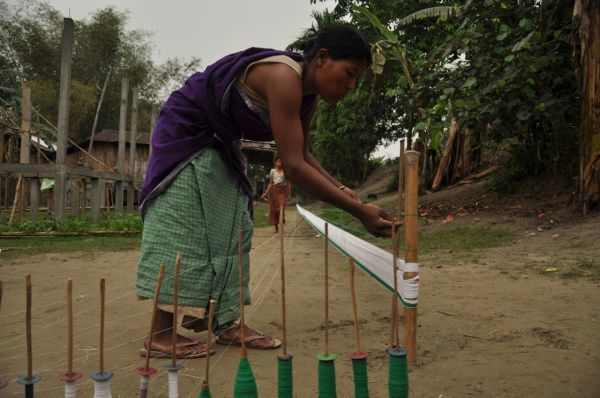
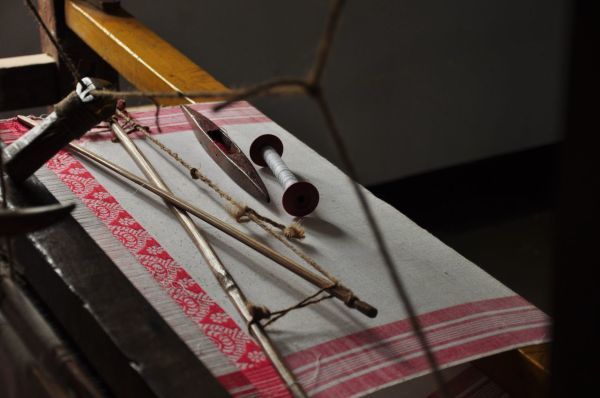
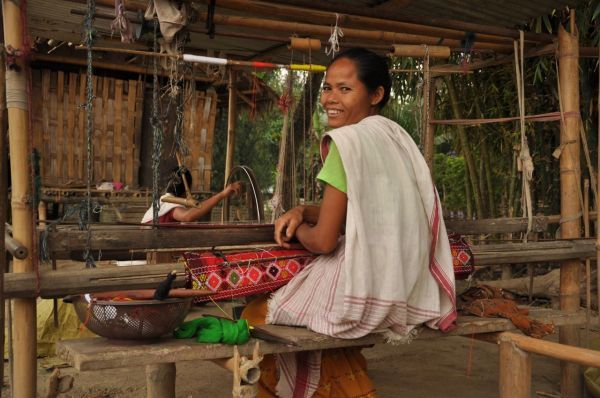
Where to stay in Majuli:
In Kamalabari there are several guest houses within a walking distance, with a backpack. But some of them refuse to receive foreign, saying that are full. Others offer poor conditions. In general, the accommodation in the island, as well as in major cities of the northeast states, is more expensive than usual, with a double bedroom with shared toilet, costing at least 400 rupees.
From several places visited in Kamalabari and Garamur, the best option is undoubtedly the Ygdrasill Bamboo Cottage, located near the road that connects the two villages. You can rent a bike (50 rupees) and order meals. The delicious dinner is composed of varied and yummy dishes; costs 150 ruppes… but the food is adjust to Western “taste”, ie without spicy.
There are several types of rooms at Ygdrasill Bamboo Cottage, all built in wood and bamboo. A double room with en-suite can vary between 600 and 1000 INR.
Ygdrasill Bamboo Cottage (on the road between Kamalabari and Garamur)
Contact: bedamajuli@gmail.com
Tel: 08876707326; 088 222 42244
In parallel with this hotel business, and based on the same site, there is a NGO – Amar Majuli – dedicated to supporting local development projects, particularly women.
https://www.facebook.com/pages/Amar-Majuli/706510102708825
Contact: amarmajuliproject@gmail.com
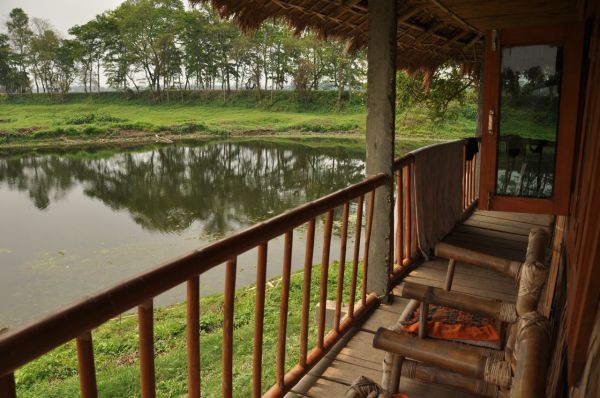
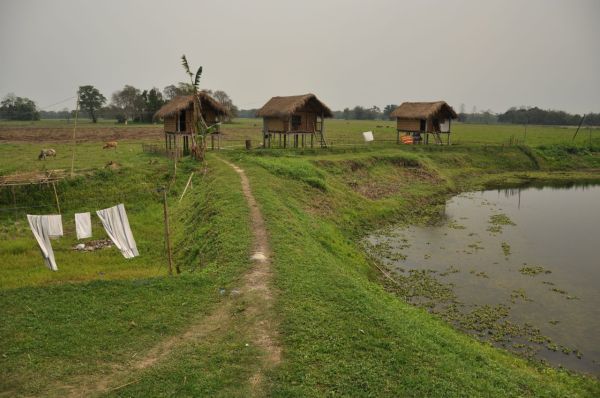
Where to eat in Majuli:
In Ygdrasill Bamboo Cottage is served dinner to the guest, and it worth, because the options in terms of restaurants, both in Kamalabari as Garamur, are truly poor and unattractive.
For breakfast you can find samosa or puris (fried flat bread) accompanied by a boring potato curry, in several restaurants. At lunch it’s only served one dish, the usual rice and potato curry and a few scarce vegetables, accompanied by a watery dal (lentil curry).
However the most popular dish is paratha, which here is made plain, without stuffing, which is no more than a flat bread, cooked in a frying pan with a bit of oil. To accompany this kind of pancake is served a potato curry, where some grains and a sweet chutney, that more resembles a fruit jam.
Clearly Assam is not a destination for those food is one of the attractions of travel!!!… potatos at every meal! However the food is very cheap, with a samosa costing 5 rupees, a meal of paratha about 25 rupees and a rice-based meal costing 60 rupees.
Transport in Majuli:
There are shared-taxis from Kamalabari to Garamur, locally called tempo, or sumo it’s a Jeep, which connect the main towns to the Kamalabari Gaht, from where the ferry. So it is best to walk down the road and wait to pass any of these vehicles or one of the few buses that connect to the ferryboat.
bus from Garamur for Kamalabari Gaht: 15 rupees
tempo or sumo (shared taxis) of Garamur to Kamalabari: 10 rupees
taxi from Garamur to Kamalabari Gaht: 200 rupees
Another option is hitchhiking, to some passing cars, not being yet difficult to get a ride because of the generosity of people.
But the best is to rent a bike. The roads are flat but have some areas in poor condition. There is no shop specializing in this business, so it is necessary to go asked the local population. Some of the guest houses rent bicycles.
Raja is a friendly taxi driver who was very helpful in the search for accommodation, at a time when almost everything was full because of the visit of Prime Minister to the island. Contact: 8811 9777 51
Internet in Majuli:
As is normal in the accommodation in Assam and other northeastern states of India, there is no wi-fi. It is necessary to look for an internet post: “web-cafe” or “cyber-cafe”. However there is not always wi-fi, but only computers.
But Kamalabari has an internet point with wi-fi and good connection and reasonable speed, situated between the main junction and the gasoline pump.
Wi-fi: 20 rupees per hour.
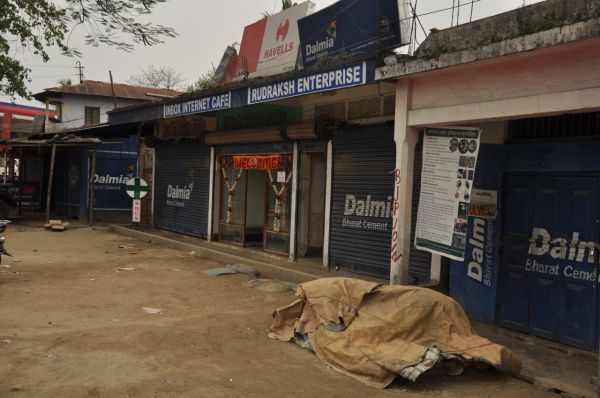
This blog was originally published on 'steppingoutofbabylon'


